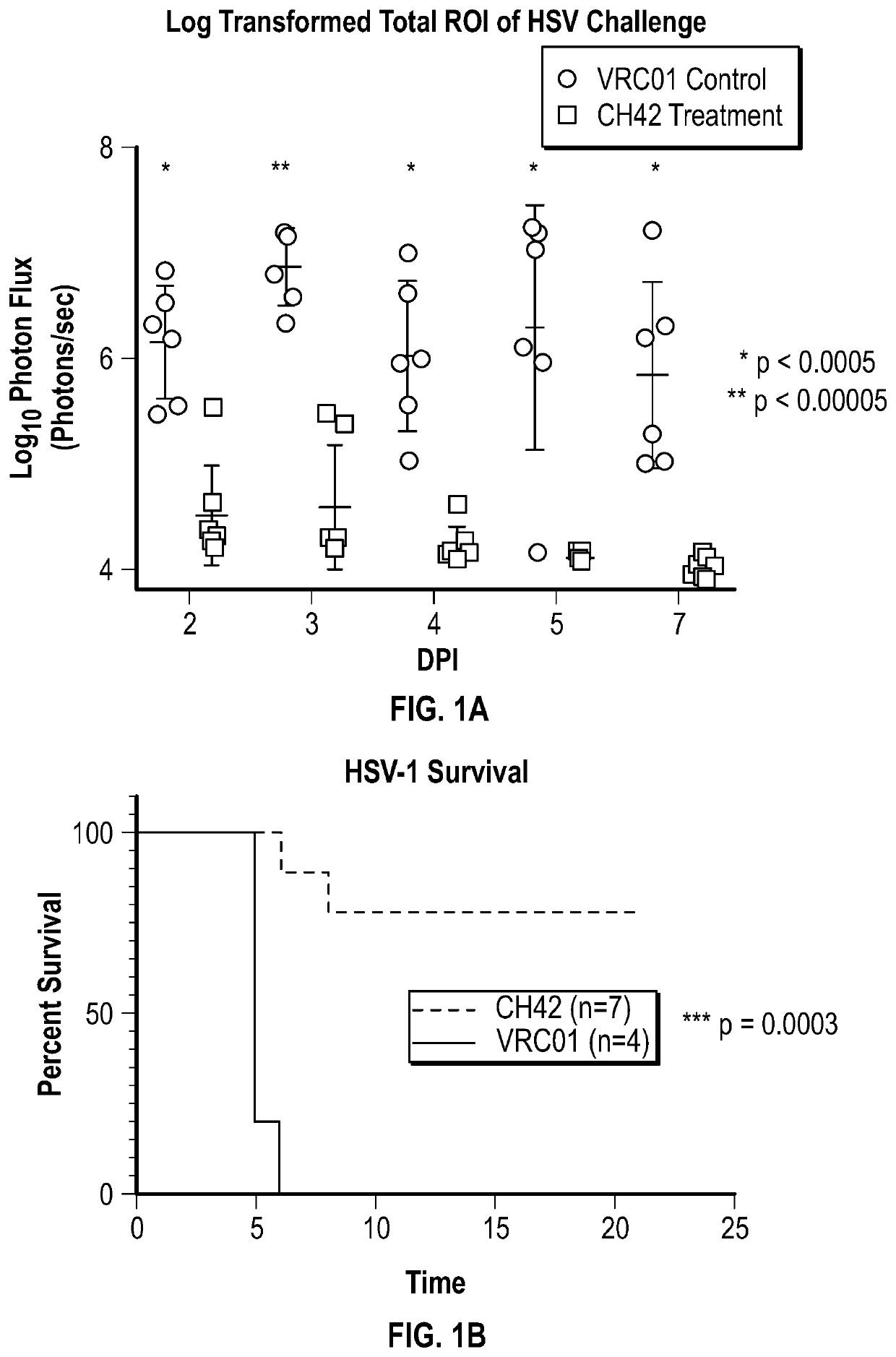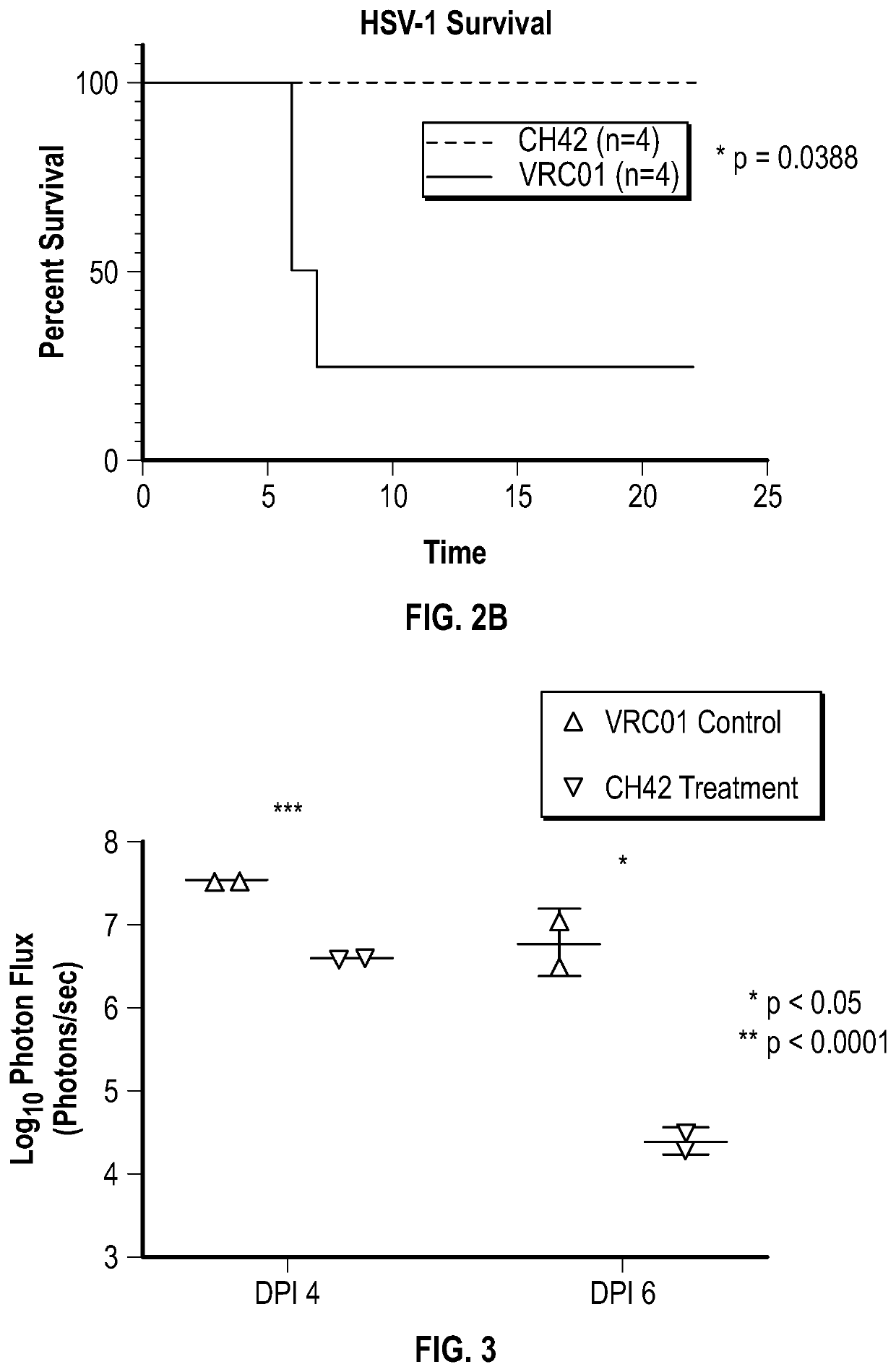Compositions and methods for preventing or ameliorating neonatal hsv infection
- Summary
- Abstract
- Description
- Claims
- Application Information
AI Technical Summary
Benefits of technology
Problems solved by technology
Method used
Image
Examples
example 1
Prophylactic / Maternal Treatment with Anti-HSV Antibody
[0147]Monoclonal antibody CH42 or a control antibody (VRC01, a broadly neutralizing HIV-specific antibody) was administered to female mice (dams) prior to or during pregnancy. Pups were challenged 1-2 days post-partum with HSV. In vivo bioluminescent imaging was used to track the progression of nHSV.
[0148]Maternal administration of CH42 was protective against nHSV associated neurological disease and death (FIG. 1A and 1B). Treatment of dams with CH42 increased survival of lethal HSV-1 challenge.
[0149]Offspring were examined for behavioral changes using a mouse model of the neurodevelopmental defects / neurological morbidity seen in surviving nHSV patients by measuring a behavior known as thigmotaxis, an anxiety-like activity in the mice. CH42 administration to dams completely prevented thigmotaxis in their HSV-infected offspring (FIG. 1C). Thus, maternal administration of CH42 provided protection not only at the level of mortality,...
example 2
Day of Infection Treatment with Anti-HSV Antibody
[0151]P2 pups from untreated dams were intranasally challenged with HSV-1 strain 17 expressing luciferase (st17dlux). On the same day, monoclonal antibody CH42 (40 μg) or a control antibody (VRC01) was administered directly to stl7dlux-infected pups via intraperitoneal injection. The pups were then monitored for weight change, progression of infection, viral titers, and survival.
[0152]Direct administration of the antibody on the day of infection protected pups from HSV-1 neurological disease and conferred a survival benefit. (FIG. 2A, 2B).
example 3
Post-Infection Treatment with Anti-HSV Antibody
[0153]P2 pups from untreated dams were intranasally challenged with HSV-1 strain 17 expressing luciferase (st17dlux). One day post-infection, monoclonal antibody CH42 or a control antibody (VRC01) was administered directly to st17dlux-infected pups via intraperitoneal injection.
[0154]Direct administration of the antibody one day post-infection protected pups from HSV-1 neurological disease. (FIG. 3).
PUM
| Property | Measurement | Unit |
|---|---|---|
| Immunogenicity | aaaaa | aaaaa |
Abstract
Description
Claims
Application Information
 Login to View More
Login to View More - R&D
- Intellectual Property
- Life Sciences
- Materials
- Tech Scout
- Unparalleled Data Quality
- Higher Quality Content
- 60% Fewer Hallucinations
Browse by: Latest US Patents, China's latest patents, Technical Efficacy Thesaurus, Application Domain, Technology Topic, Popular Technical Reports.
© 2025 PatSnap. All rights reserved.Legal|Privacy policy|Modern Slavery Act Transparency Statement|Sitemap|About US| Contact US: help@patsnap.com



